2020 Revel Ranger X01 Eagle Bike
(discontinued)
| Where To Buy | |||
|---|---|---|---|
Free shipping on orders over $50 (continental U.S. only).
International shipping available. Some exclusions apply. |
|||
Free shipping on orders over $50 (continental U.S. only).
International shipping available. Some exclusions apply. |
|||

Revel Bikes is a rider-owned and privately funded bike brand out of Carbondale, CO. They might be small but they are trying to make a positive impact on the bike industry as well as the environment. Their goal is to design the best bike from the ground up and make that bike as environmentally friendly as they can. Enter the Revel Ranger! This is Revel’s third offering. With 115/120mm of travel and an XC biased geometry, the Ranger made Vital want to spread its lycra wings and fly.
Highlights
- Carbon fiber frame
- 29-inch Fusion Fiber carbon wheels
- 115 mm (4.5-inches) of rear wheel travel // 120 mm (4.7-inches) fork travel
- Canfield Balance Formula (CBF) suspension design
- Tapered headtube
- Internal cable routing
- Threaded bottom bracket (no ISCG mounts)
- 148mm rear spacing with 12mm through axle
- Multiple bottle mount options (2 on size small, 3 on medium)
- Measured weight (size medium, no pedals): 27.6 pounds (12.5 kg)
- MSRP $7,699 USD
Strengths
| Weakness
|

Ironically, the clean lines and subtle branding of the Revel Ranger can’t help but get it noticed. What truly makes this bike standout goes deeper than the paint. The Ranger comes from a company committed to doing things their own way. They didn’t have to choose to pay for the Canfield suspension design but felt that was the best for their bikes. Revel also don’t have to be so committed to the environment but they choose to only work with manufactures who share their vision. While this is a bike test of the Revel Ranger, we felt that it is worth mentioning a bit about the brand and what they stand for. To us, this is one of the standout features of their bikes.
Geometry

Traditionally, we tend to test bikes in the 140mm to 160mm range with head angles around 64-degrees. That said, the steep 67.5-degree head angle threw us off a bit. When combined with a comparatively long 453mm reach, the Ranger seemingly is made to climb more so than descend. With numbers like these it doesn’t exactly fit into the “modern geometry” category. So where does it fit? Well the Ranger is in a lonely class right now. These new-school XC bikes have geometry similar to trail bikes, but definitely lack the travel and robust suspension. With a steep head angle and big reach, the Ranger seems to fit somewhere between the more classic geometry of the Cannondale Scalpel SEand the more modern SBG setup of the Transition Spur.
Setup
Initial setup of the Ranger was straightforward. It was simply setting the suspension and seat height. Shock pressure was set to within the RockShox’s recommended 30%, for us that meant 123psi. The fork was also set based on the range provided on the fork lower sticker at 53psi. In terms of cockpit, the bar spec on the X01 Eagle build is the ENVE M6 Carbon (31.8mm x 780mm) however the Ranger arrived with a TruVativ Descendant carbon bar that was slightly narrower than spec. Because of this we didn’t have to change bar width at all to get a great fit. Stem was on spec as a 40mm Truvativ Descendant. After just a few minutes we were ready to go Revel the trail.

Initially, the Ranger felt a bit too spacious in the cockpit. Being on the shorter end of size medium, the 453mm reach was noticeable. However, this feeling didn’t last very long into the first ride. The front end felt a little lower than many of the bikes we had tested, which makes sense given the bias towards XC. This helped to bring us forward on the saddle and stay there during climbs.

On The Trail
We were fortunate enough to have the Revel Ranger for a few weeks, this provided opportunities to ride on a variety of trails. All were in the Reno/Tahoe area and varied between wide open smooth singletrack and forested rocky terrain. It was a mix of trail that suited the Ranger’s XC leanings as well as some that tested the 120mm/115mm of travel. From the variety of singletrack on Peavine Mountain, to Sky Tavern Bike Park and the flow trails in Truckee, we felt confident in giving the Range a fair shake.
DH/Technical Performance/Fun Factor
As a bike that was “built for the ups and downs” we have to be honest and say that we weren’t initially impressed with the handling on the downs. It was a struggle to stay over the front and the handling felt sluggish. Changing lines wasn’t easy and our Ranger didn’t instill confidence to push. However, it was quickly realized that the problem was not with the Ranger’s geometry but with the RockShox SID Ultimate setup. We will go into more detail about the fork specifics later in this review but know that once we dialed in the fork, the bike really came alive. It was fun, responsive, and confidence inspiring. We have been on a fair amount of bikes and it was quite a surprise how drastically the personality of the bike changed based on a few setup tweaks.

Rear Suspension Performance
As previously mentioned, Revel has built their bikes around the CBF (Canfield Balance Formula) suspension platform. This design allows the suspension to operate independent of drivetrain and braking forces. It is also designed to make setting sag less critical. For us this translated into a trail feel that really did seem to have more than 115mm of rear travel. It was supportive without feeling harsh, even through rough terrain that pushes the boundaries of XC. We found that the Ranger responded best to inputs and didn’t get overwhelmed or hang up as long the rider is active. It rewards good behavior and would tend to hang up a little bit if we got a little too lazy going down the trail.

On our particular build, all this was made possible by the SID Luxe Ultimate. This shock has very few adjustments which made set up super easy and not much to mess with on the trail. Honestly, it was refreshing to set it and forget it. It felt great at 30% sag and there was nothing we felt we needed to try to tune out. It was predictable, stable and supportive. Do you need much more than that? It does have a lockout, although we didn’t spend much time using it. The pedaling efficiency is good enough already and not worth beating ourselves up to go just a little faster. However, for those of you who might be taking the Ranger on some longer road climbs, there is an option for remote levers to lock out the fork and shock.
Geometry
Have you ever looked at something, made an opinion, and then realized you were completely wrong? That is basically what happened after we spent more time with the Ranger. At face value it should be more of an XC bike with its steep head angle, long reach, and low front end. Revel’s Ranger is primed for climbing. How could it possibly be a confidence-inspiring bike downhill? We are used to hearing descriptions like “bottomless travel” or “seems to have more than 115mm of travel” but are we going to have to start talking about head angles that way? If we are, then the Ranger felt closer to a 64 or 65 degrees. This was such a surprise considering what a jump the Ranger is from our usual trail bike.

Climbing
While the Ranger was capable going down the trail, it’s XC flag was flying on the way up. It is efficient, fast, and easy to maneuver even on steep and rocky terrain. But all this happened only after we figured out how best to pedal. Yes, we have been riding bikes forever over here at Vital but apparently you can teach an old dog new tricks. Just like with the downhill, the Ranger wants an active rider. On the climb this means an efficient, smooth pedal stroke to get the most out of the suspension. Start to mash in a hard gear and the result is punishing in terms of bob. Conversely, the CBF platform makes smooth pedaling possible in rough terrain. Either seated or standing, little feedback is felt by the rider and traction is both consistent and predictable.
Where things did get a little tricky is with perceived weight. The Ranger isn’t a particularly snappy bike off the line and we expected it to be. With its XC-leaning geo and coming in at 27.6lbs we thought that it had to feel like a rocket ship compared to our 160mm steed. Instead, it needed a bit of a warm up. On the plus side it does maintain speed very well once it gets going.
Build Kit
Fork Performance
If there was one part of the Ranger that we struggled with, it was the RockShox SID Ultimate fork. Initial setup was done using the guidelines provided by RockShox. This is generally our approach when hopping on a new bike and it tends to be pretty close. This go-round was a bit of a swing and a miss. From the first ride, it felt like the bike was hard to control and it was tough to get over the front. The initial thought was that maybe it was because of the geometry. The reach was too long or the front end too low. But after a bit more riding it became clear that the fork was diving. This was particularly apparent coming into corners. The SID Ultimate also felt quite harsh. Hoping to fix this we tried a few things. The first thing we tried was to add more pressure, the second to add tokens. We took the fork to 60psi and were able to do back-to-back loops to compare. It was night and day in terms of handling. The Ranger came alive and jumps we had avoided on lap one seemed easy on lap two. After adding more pressure, we tried tokens. The bike came with no tokens so we added two, lowered the pressure to 55psi, and went for a spin. What we found is that the tokens again made it feel harsh. Of the two options, increasing the pressure with zero tokens was the ticket to a more comfortable ride.


Tire Performance
We had to get used to XC-leaning tire choices. Up front the Ranger has a 2.4-inch Maxxis Dissector paired with a 2.4-inch Maxxis Rekon. While they aren’t exactly semi-slicks, they are more svelte tires than tend to adorn trail bikes. With that said, they did provide more consistent traction than expected. The Maxxis combo would slide around but somehow always hooked back up when it mattered most. We definitely would ave appreciated more bite under heavy braking. Not sure how much was the tires vs the rotor size, but hard braking left something to be desired. Tires are something that we would swap out if this was our personal bike. The solid climbing performance combined with 29-inch wheels is enough that we would be willing to sacrifice a little bit of rolling resistance and weight for improved traction.

Wheel Performance
While we are happy to talk about how the wheels performed, the cool story is how they ended up on our Ranger in the first place. Going along with Revel’s commitment to the environment is their development of Revel Wheels. They are 100% recyclable and made with environmentally friendly methods. This technology is called Fusion-Fiber and it comes from the world of aerospace manufacturing. Among other production changes, they have swapped the standard epoxy with a nylon-like polymer that allows Revel to create a pliable rim less prone to catastrophic failure. If a wheel does break, Revel offers a warranty and crash replacement, including shipping both ways. The broken wheel is then chopped up and recycled into other bike parts.
So that is the backstory, but how do they perform on trail? First up, we didn’t get to test the exact spec wheel for the build. The Eagle X01 build is supposed to come with the slightly narrower and a touch lighter RW27s. Instead we had the RW30s. Generally, the wider the rim, the more stability the rider will feel. On the flip side the tires tend to roll a bit slower because of the wider contact patch. Keeping this in mind we can’t really say how much the width would have changed climbing performance or speed but we do know that the RW30s had all the stiffness and dampened trail feel one comes to expect from carbon wheels. And we think they look slick with the minimal graphics and image reminding us to recycle. Laced to these rims are Industry 9 1-1 hubs which we credit with being able to clear some of the climbs that have eluded us on other bikes. We really like the quick engagement to get up and over rocks even from a standstill.

Brake Performance
It is the worst when you are coming into a turn and realize that you aren’t slowing down as much as you want. Unfortunately, this was a bit of our experience with the SRAM G2 RSCs. They felt a bit under gunned. Of course, there could be a few reasons that have nothing to do with the brakes themselves. Our test bike had a 160mm rear/180mm front rotor combo. It might be more effective to have a matched of 180mm front and rear, though that is what Revel is now speccing on the bike. Also, tire choice can impact braking performance. Given this we would try to remedy it with either a swap of rotors or tires to get a bit more bite. What we did like about the G2 RSC’s are lever feel and the modulation. The ability to adjust levers on the fly is also pretty nice.

Drivetrain Performance
The SRAM X01 Eagle drivetrain performed great through the whole test. The 10-52 range is more than ample and when combined with the pedaling efficiency made for a climbing machine. While this bike doesn’t have an integrated chain guide like some other Revel bikes, it didn’t need one. The chain never dropped or skipped. Which was great considering we had some Strava climbs to tackle.
Noise
Through the duration of the test noise was never an issue. No clanks or creaks. But just in case, the frame does come with a built in chainstay protector.
Changes/Upgrades
As a whole, the Ranger we tested has a solid build. There is nothing proprietary or funky. It uses well-known and trusted brands plus the choices make sense for the Ranger. That said, there are a few items that could be changed based purely on personal preference or home trails and riding style. First off, switching to some beefier tires is an option if you live in a super rocky area or want a bit more grip. Also, the brakes felt a bit underpowered so it might be worthwhile to invest in another 180mm rotor if you feel that a bit more grab would be nice. Speaking of local trails, if they involve long road climbs there is the option to upgrade to front and rear lockout switches. If this isn’t the case, paying for this upgrade doesn’t seem to be worth it given how well the bike climbs on its own.

Long-Term Durability
Over the duration of this test the bike started and stayed quiet, and the components didn’t need any replacement or repair. The Revel Wheels stayed true and maintained spoke tension throughout the whole test. This is particularly impressive because we did push it on some technical and rocky terrain. All of this paired with an original buyer lifetime warranty and crash replacement policy makes the Ranger a solid choice for a bike that will last.
What's The Bottom Line?
After working out some of the kinks with suspension and re-learning how to pedal, the Ranger became one of the biggest surprises we have had in a while. It was fun and efficient uphill and more of a ripper than the spec sheets would imply. The Ranger falls into a unique category of bike that you can pedal all day, yet it won’t beat you up on the way down. Sure, there are some bikes with a similar builds that are a little cheaper, but how many come from a rider-owned company trying to do good things for the planet?
Visit RevelBikes.comfor more details.

About The Reviewer
Amanda Wentz - Age: 40 // Years Riding MTB: 15? // Height: 5'6" (1.67m) // Weight: 130-pounds (58.9kg)
Amanda Wentz started out mountain biking as an escape from the drudgery of half-Ironman training and endurance sports. After finding her love of technical terrain, downhill racing followed suit. A few high points of Pro GRT podiums and a 5th at National Championships rounded out most of her racing, and now she enjoys pushing herself without a clock. Currently, finding the big mountain rides light her spirit, wherever those mountains may be. Amanda is based in Reno, NV or anywhere else across the mountain West she may adventure to ride bikes.
Photos by Steve Tenuto and Shawn Spomer
Specifications
Upgrade options: RockShox SIDLuxe Ultimate (with remote lockout), FOX FLOAT DPS Factory
Upgrade options: RockShox SID Ultimate (with remote lockout), FOX FLOAT 34 Step-Cast (SC)
Upgrade option: Industry Nine Hydra
Rear: Maxxis Rekon, EXO, 29" x 2.4"
Option 2: RockShox Reverb dropper; 150mm, 170mm, or 200mm drop
Internal cable routing
Includes two Stan's NoTubes Single Shots tubeless tire sealant
Compatible with 27.5+ wheels
| Where To Buy | |||
|---|---|---|---|
Free shipping on orders over $50 (continental U.S. only).
International shipping available. Some exclusions apply. |
|||
Free shipping on orders over $50 (continental U.S. only).
International shipping available. Some exclusions apply. |
|||



















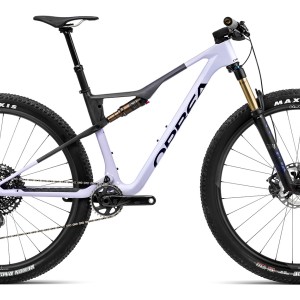
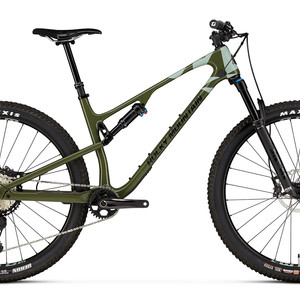

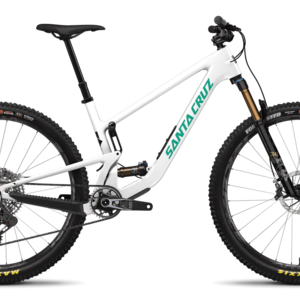
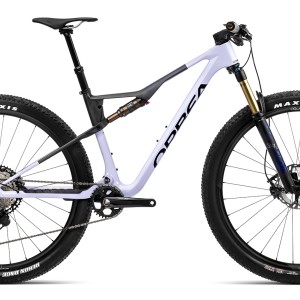
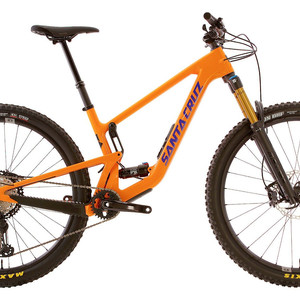
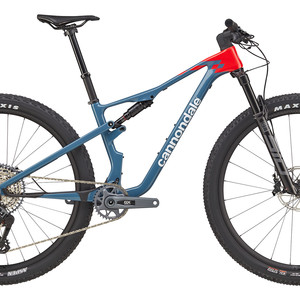







11 comments
Post a reply to: Tested: Revel Ranger X01